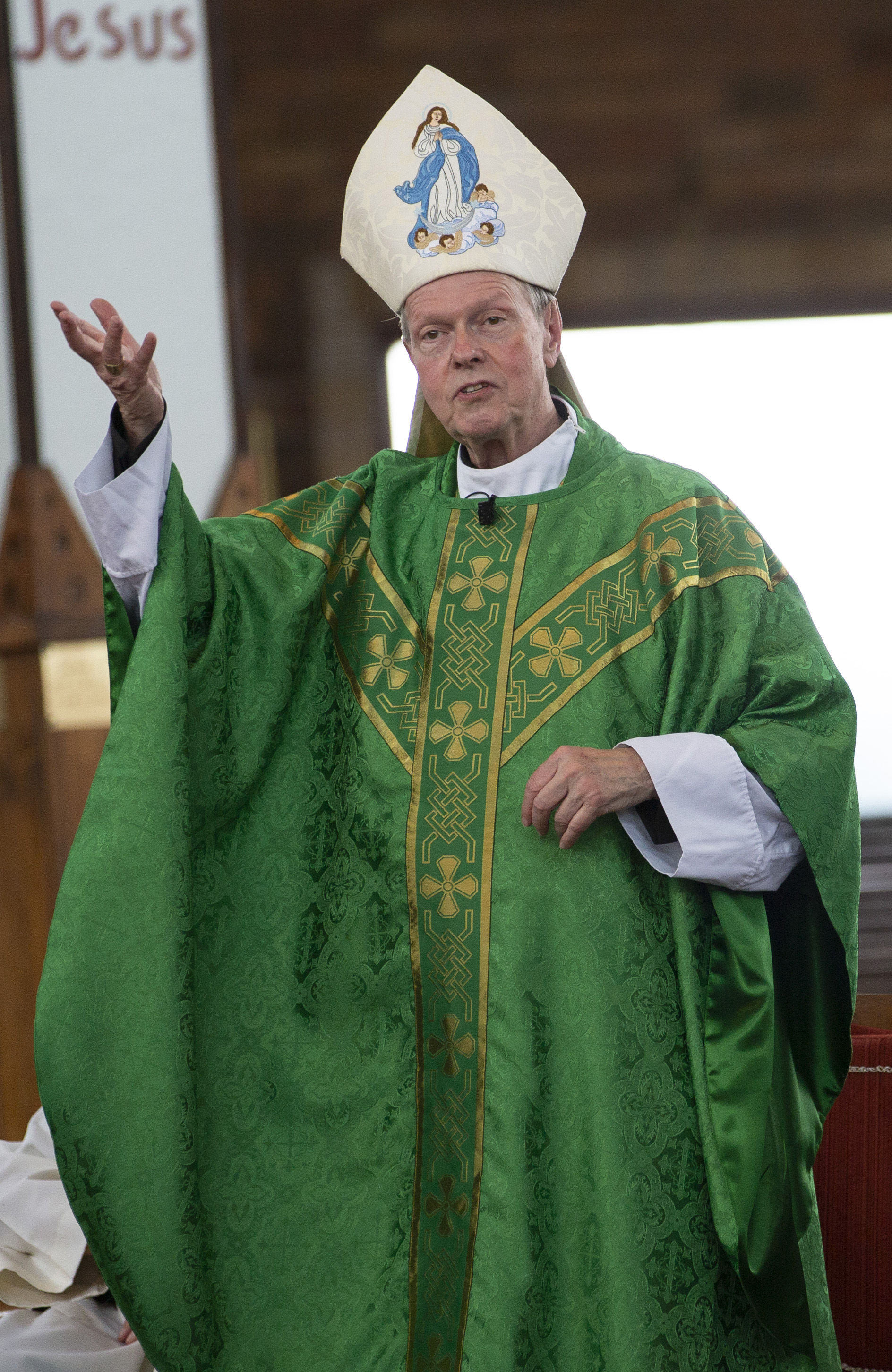April 6, 2018 at 1:53 p.m.
CATHOLIC EDUCATION
Committee ponders changes to Troy schools
The committee initially came about because St. Augustine's, Sacred Heart and St. Jude, all currently pre-kindergarten-through-sixth-grade schools, were each considering reinstating their seventh and eighth grades. Currently, Catholic High is the only diocesan school in Troy that includes the junior-high grades.
But Michael Pizzingrillo, diocesan superintendent of schools, said the committee's goal has expanded to "look at, 'How can we sustain a K-through-12 perspective on Catholic education in that region of the [Albany] Diocese?'"
"This is a very exciting opportunity for the schools in Troy to 'play offense,'" said committee member Gregory Vandenburgh, who's also a member of the Diocesan School Board.
He said all the schools on the committee are strong, given their current resources -- "There's no particular 'fire alarm' for these schools right now" -- but the schools are mindful that upgraded facilities and added grade levels at area public schools can affect their enrollment.
The two dozen committee members include several representatives from each school. Mr. Pizzingrillo said their work can help the schools enhance academics, extracurricular activities and more.
"It's important that we take these decisions very seriously," said Christopher Bott, principal of Catholic High, adding: "Everyone around the table has good intentions."
Why add grades?
"We had a lot of parent interest" in adding grades at St. Augustine's, recalled Joseph Slichko, principal of that school for four years.
He noted that St. Augustine's, Sacred Heart, St. Jude, St. Mary's Academy in Hoosick Falls and CCHS have a long-standing commitment to working together; they'd been meeting monthly even before the four-school committee was formed.
Erin Baker, principal of St. Jude, said discussions about reinstating her school's junior-high grades goes back 25 years, to when those grades were eliminated: "It's always been a topic of conversation."
Mr. Slichko believes that, decades ago, there was a belief that education for students in higher grades was best split off -- that elementary schools "couldn't handle it" -- but "it's a different world today. Nowadays, parents don't want their kids to grow up too quickly. Some don't want their 12- or 13-year-olds walking down the hall with 18- or 19-year-olds" at a high school.
He was enthusiastic about the committee, saying the Troy-area Catholic schools are "starting from scratch" in looking at Catholic education in the city together and deciding what the best model for that might be.
Effect on Catholic High
Mr. Vandenburgh thinks the end result will be increased enrollment at CCHS.
At the moment, Catholic High's enrollment from the three "feeder" elementary schools stands at about 25 percent; Mr. Vandenburgh would like to see it increase to 40 or 50 percent. He thinks adding a junior high at one or more of the other schools could help.
"There's a disconnect from the graduating sixth-grader to the enrolled freshman [at CCHS]," he said; and for the seventh and eighth grades, "There's only one option in the city of Troy."
Mr. Vandenburgh believes "more options equals higher retention in those grade levels equals higher enrollment" at Catholic High.
Mrs. Baker told The Evangelist that some families at her school struggle with the cost of a Catholic higher education. She believes staying at a parish school longer would help them afford to send their children to a Catholic high school, and that the close-knit nature of a parish school is something families at St. Jude want.
She also pointed out that CCHS is currently the only option for girls in Troy to continue their Catholic education, since LaSalle Institute is a boys' school.
Mr. Bott said the committee's whole purpose is to find the "best scenario for our Catholic-school families" and the best retention of students, whether that means Catholic High keeps its seventh and eighth grades or moves them back to the elementary schools.
Happy together
Mr. Pizzingrillo noted that enrollment in Catholic schools is nearly steady across the Diocese, with less than a one-percent loss. He'd like all schools to look at issues "in a proactive way," as the Troy schools are doing.
"We're all coming together in a positive way. We all work so well together," Mrs. Baker remarked.
The new committee met for the third time April 1 and has formed subcommittees to look at buildings and grounds, finances, educational programming and data collection. Some members made a proposal to use the Siena Research Institute at Siena College in Loudonville to help collect demographics about the Troy schools.
The committee will meet again in a month; in September, they'll make their recommendations to the Diocesan School Board. Bishop Edward B. Scharfenberger is expected to make a decision in November on whether to allow the seventh and eighth grades to be reinstated at the three schools.
If the schools did add higher grades, Mr. Pizzingrillo noted, it's possible that CCHS might phase out its lower grades, halting recruitment for seventh grade and then for eighth grade as current students moved up a grade level.
But committee members said all options are still being considered and they're open to ideas.
"We're looking at every single thing we could possibly do," said Mr. Vandenburgh.[[In-content Ad]]
MORE NEWS STORIES
SOCIAL MEDIA
OSV NEWS
- Family of kidnapped Irish missionary ‘on tenterhooks’ awaiting news, parish priest says
- The Naked Gun
- Catholic women at Knights convention urged to ‘live on tomorrow’s joy today’
- Newark Archdiocese settles abuse claims against retired bishop who denies allegations
- Families invited to share their vision for church at Sydney’s synod consultations
- For these young adults, soon-to-be-saint Frassati has ignited their faith amid fellowship
- Amid ‘reverse migration,’ sisters in Mexico accompany migrants trapped by US policies
- Catholic family experts tie marriage to dropping US fertility rate
- Ambassadors call attention to starving Israeli hostages, Gazan civilians
- U.S. bishops in Japan call for peace worldwide 80 years after atomic bombings







Comments:
You must login to comment.